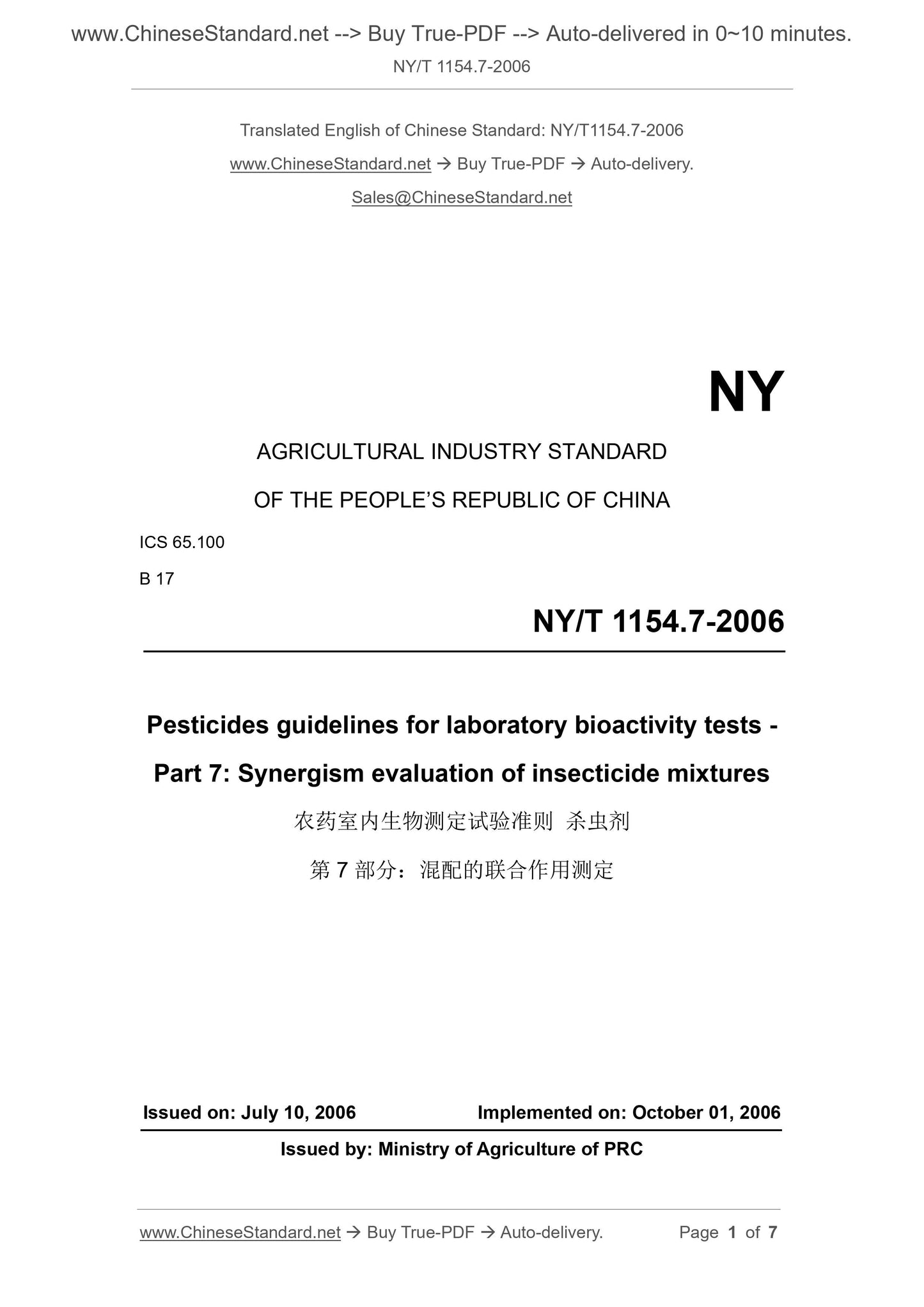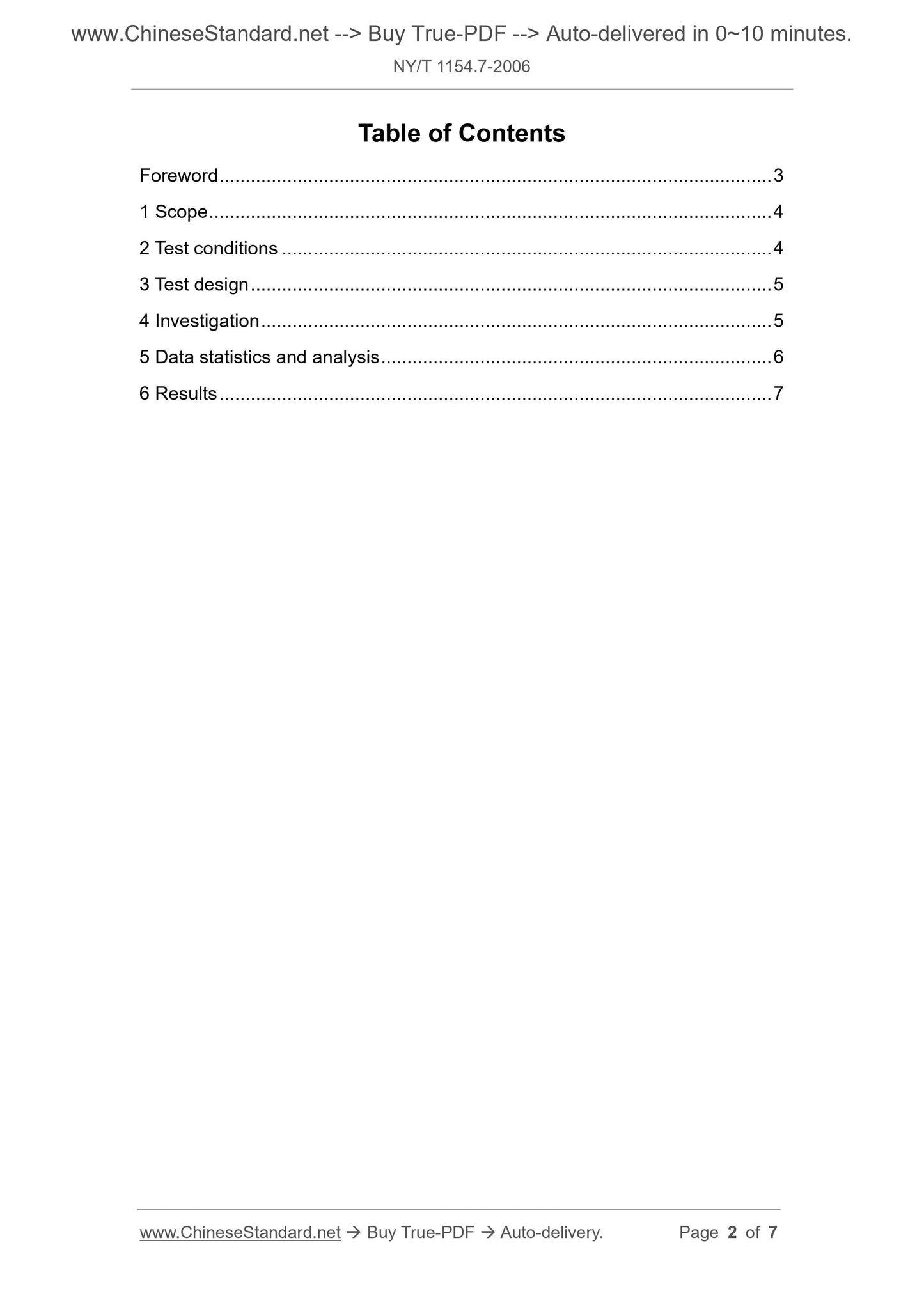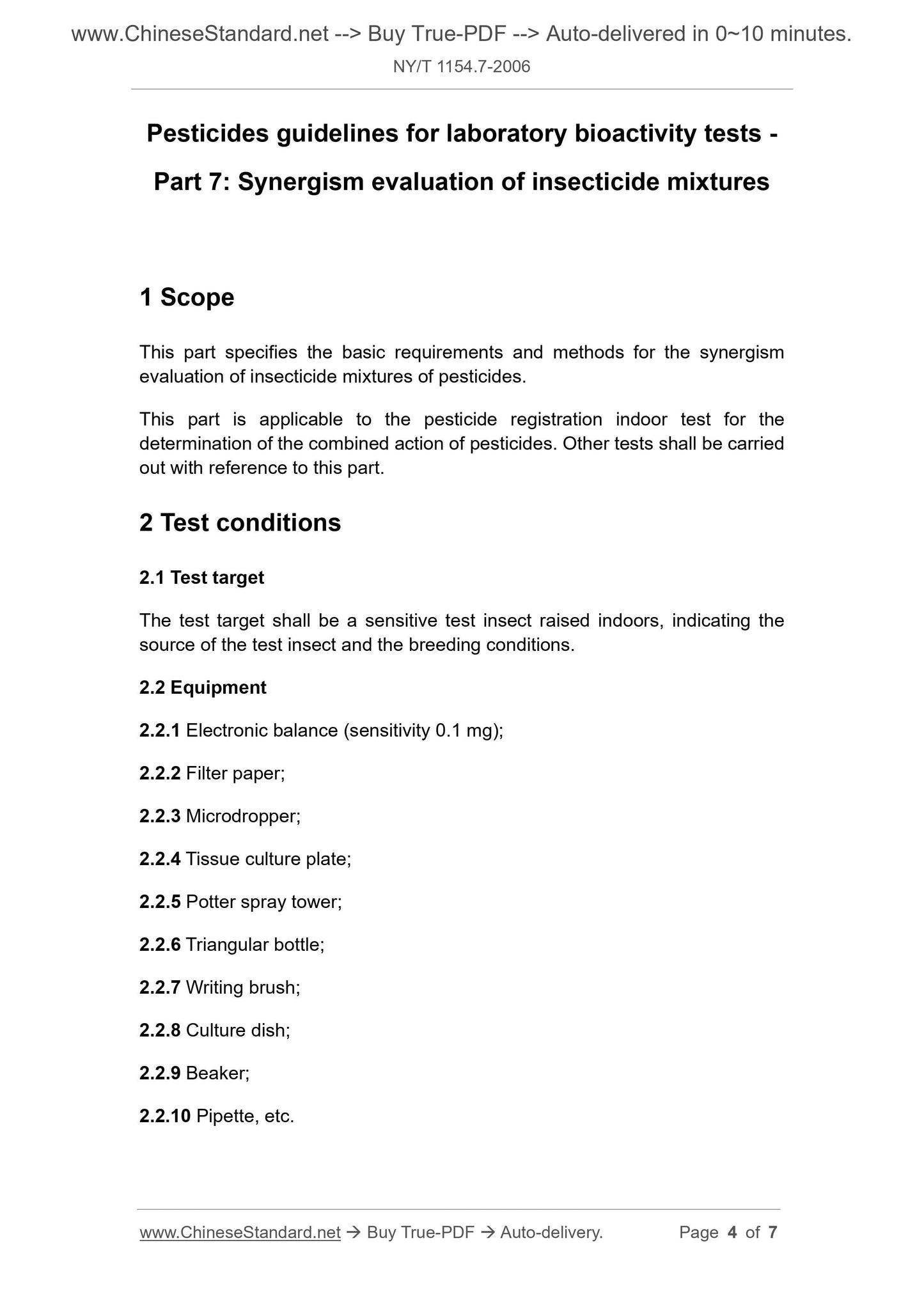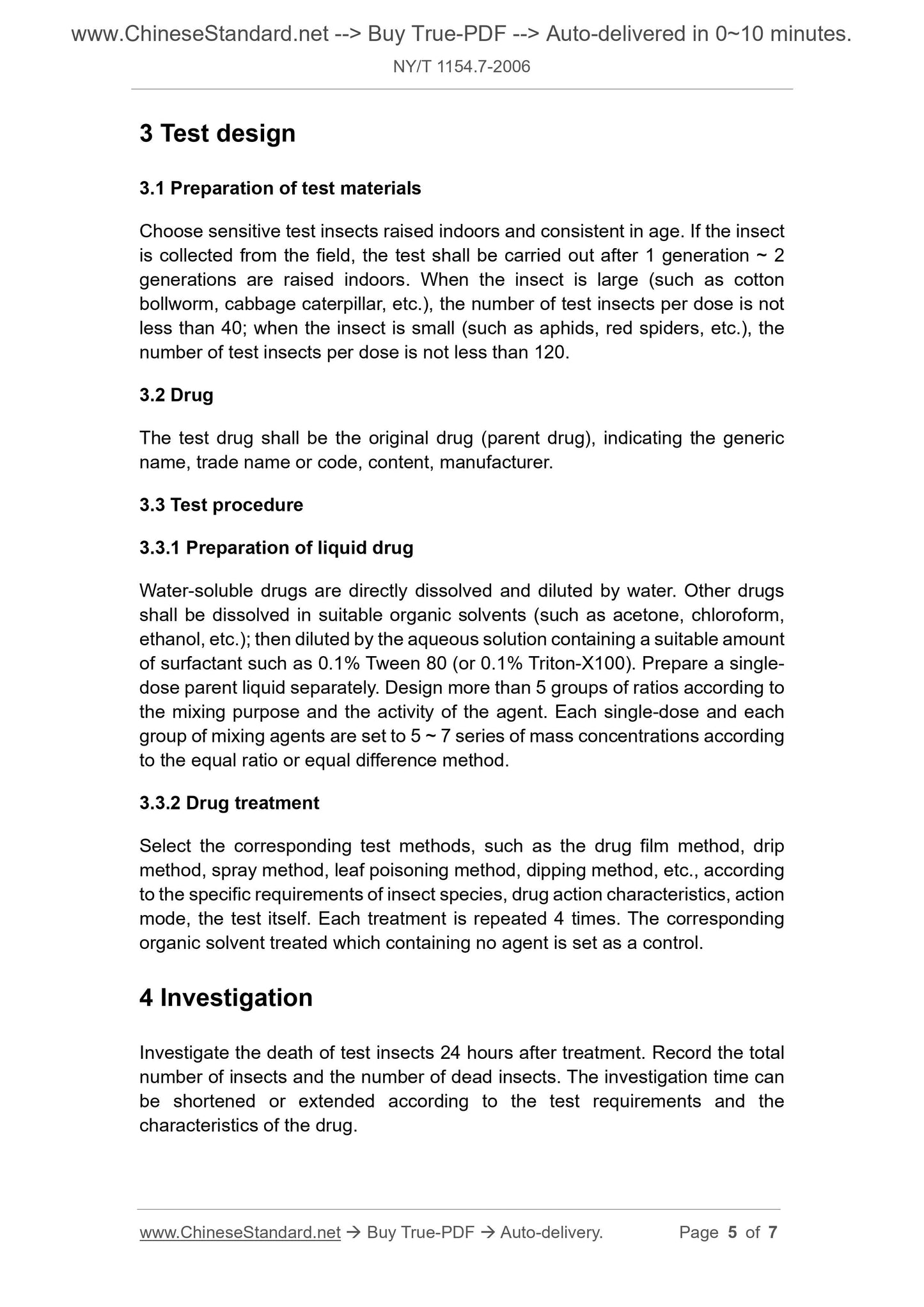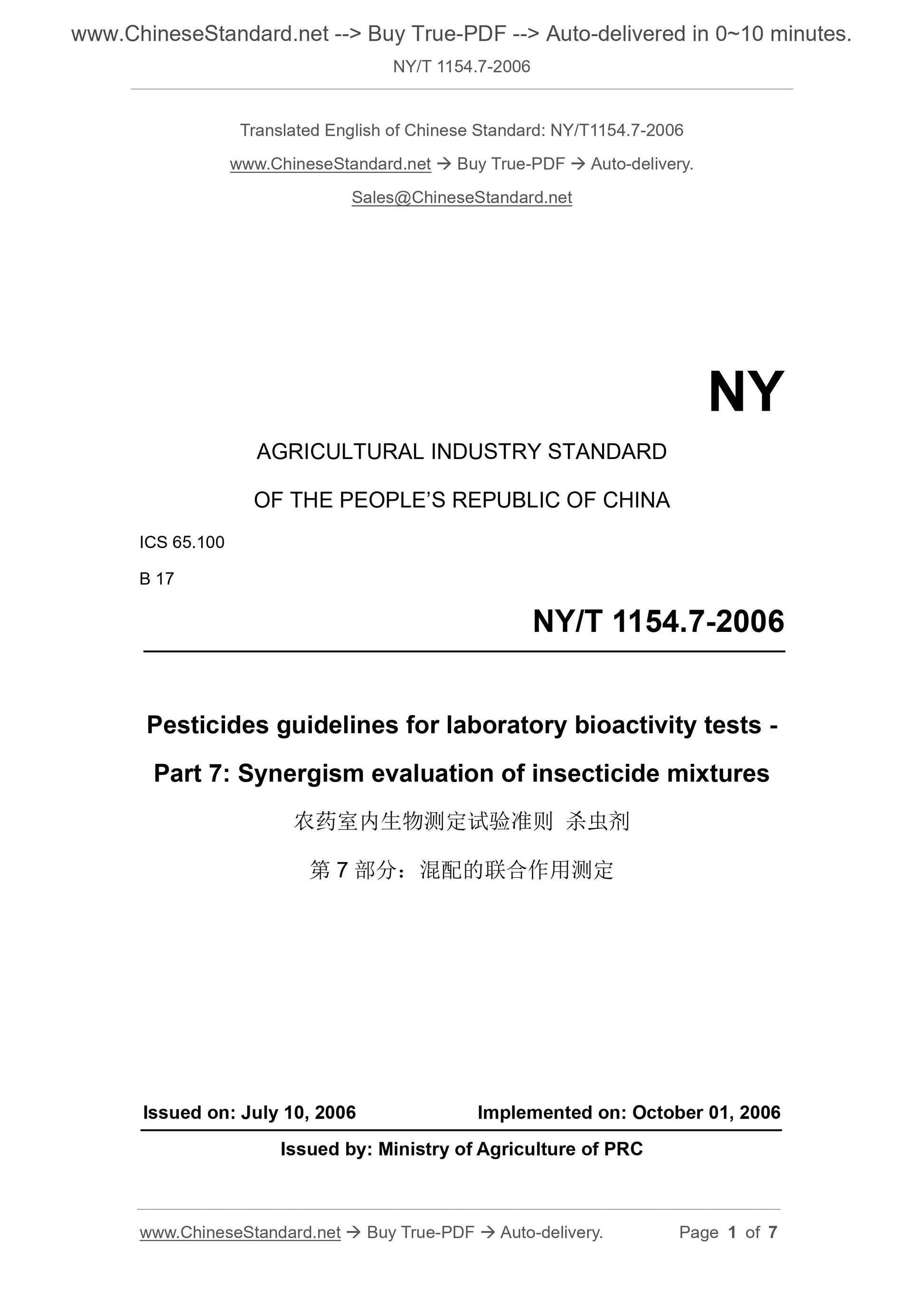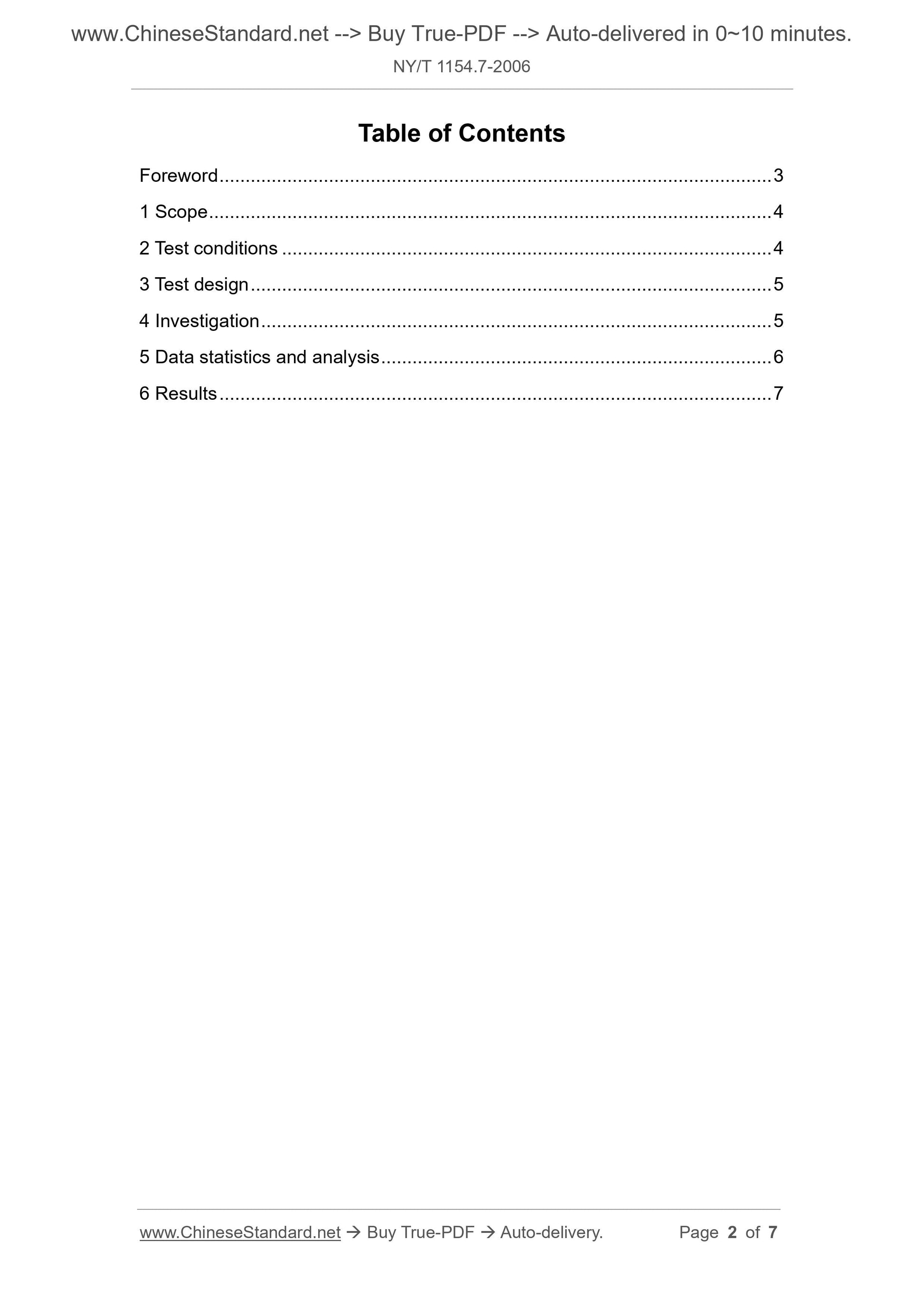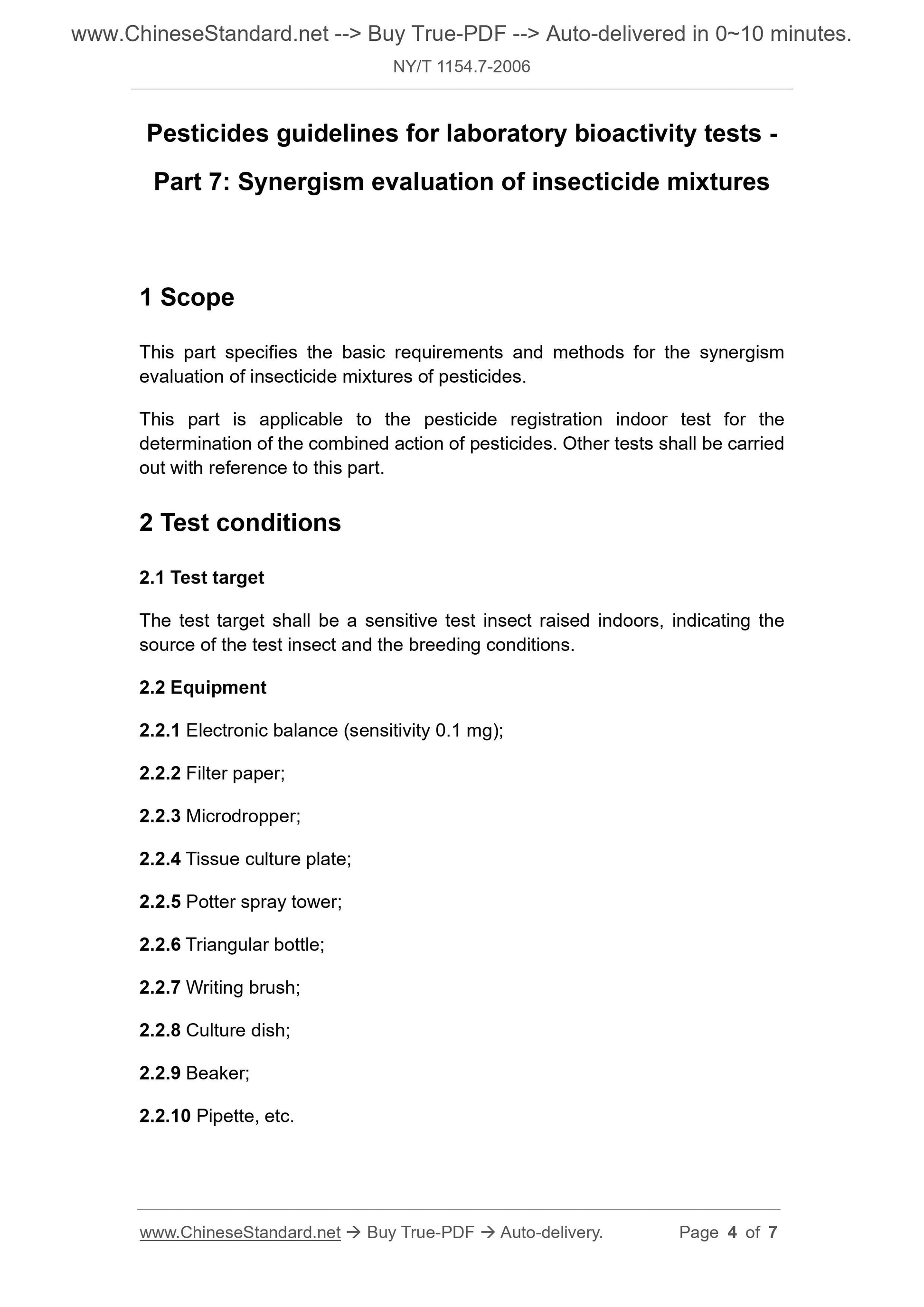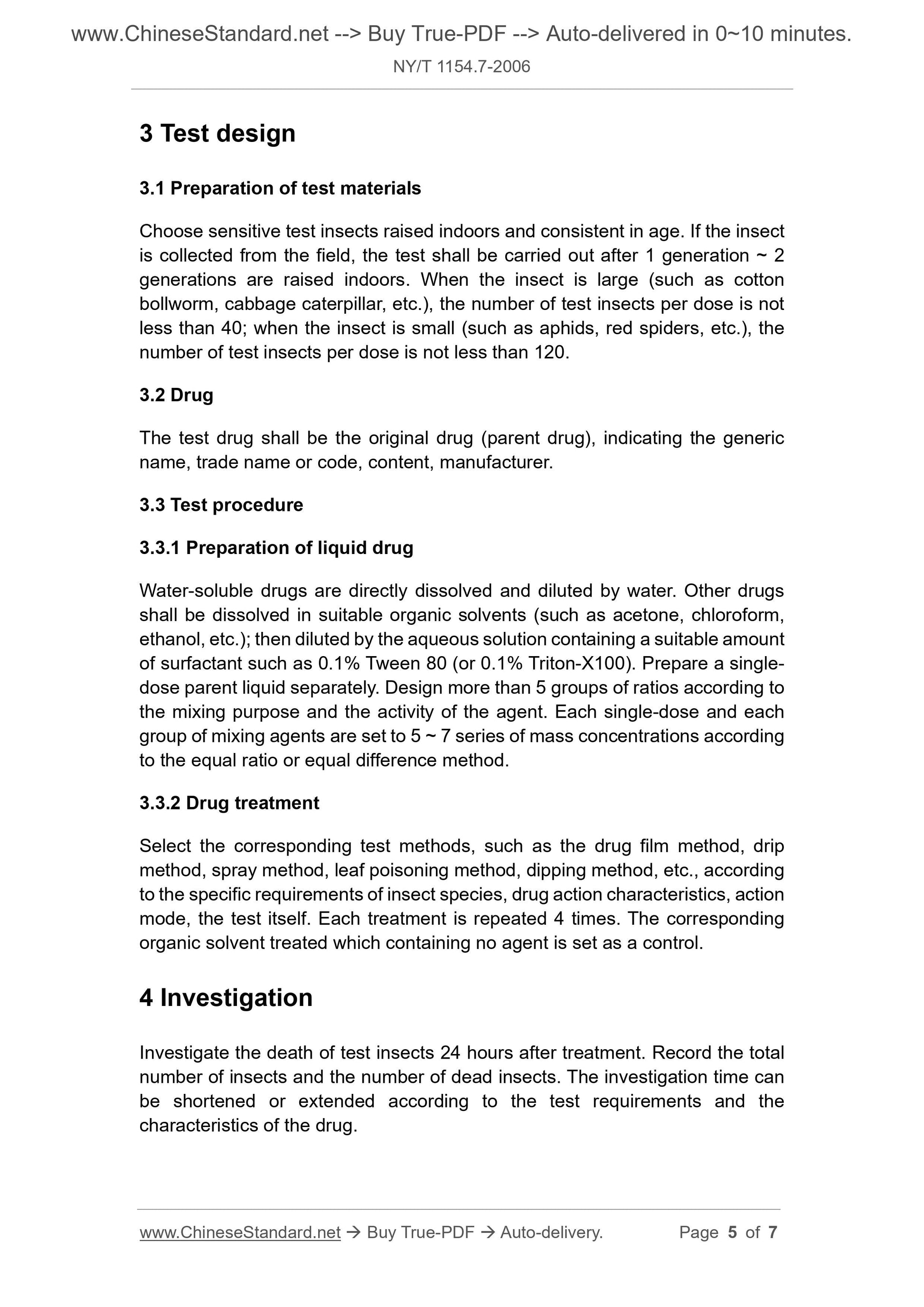1
/
of
4
www.ChineseStandard.us -- Field Test Asia Pte. Ltd.
NY/T 1154.7-2006 English PDF (NY/T1154.7-2006)
NY/T 1154.7-2006 English PDF (NY/T1154.7-2006)
Regular price
$155.00
Regular price
Sale price
$155.00
Unit price
/
per
Shipping calculated at checkout.
Couldn't load pickup availability
NY/T 1154.7-2006: Pesticides guidelines for laboratory bioactivity tests. Part 7: Synergism evaluation of insecticide mixtures
Delivery: 9 seconds. Download (and Email) true-PDF + Invoice.Get Quotation: Click NY/T 1154.7-2006 (Self-service in 1-minute)
Newer / historical versions: NY/T 1154.7-2006
Preview True-PDF
Scope
This part specifies the basic requirements and methods for the synergismevaluation of insecticide mixtures of pesticides.
This part is applicable to the pesticide registration indoor test for the
determination of the combined action of pesticides. Other tests shall be carried
out with reference to this part.
Basic Data
| Standard ID | NY/T 1154.7-2006 (NY/T1154.7-2006) |
| Description (Translated English) | Pesticides guidelines for laboratory bioactivity tests. Part 7: Synergism evaluation of insecticide mixtures |
| Sector / Industry | Agriculture Industry Standard (Recommended) |
| Classification of Chinese Standard | B17 |
| Classification of International Standard | 65.100 |
| Word Count Estimation | 6,690 |
| Date of Issue | 2006-07-10 |
| Date of Implementation | 2006-10-01 |
| Regulation (derived from) | Ministry of Agriculture Bulletin No. 680 |
| Issuing agency(ies) | Ministry of Agriculture of the People's Republic of China |
| Summary | This standard specifies the determination of the combined effects of pesticide mixtures basic requirements and test methods. This standard applies to the determination of the combined effects of pesticides pesticide registration indoor test, other tests performed with reference to this section. |
Share
